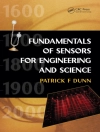This reference text explores cutting edge research into the detection of breast cancer using Microwave Imaging. Early breast cancer detection is vital for reducing mortality rates. Within this book Microwave scattering and microwave imaging based cancer detection are analysed as well as breast anatomy and breast cancer types. The book discusses 3-D level set based optimization as well as the Finite difference time domain (FDTD) technique. Advanced methods in image reconstruction techniques and Group Theory are explained with application to computation reduction. Machine learning-based advanced methods are also described for breast cancer detection.
This book is highly useful for the academic community working in biomedical imaging, electromagnetic and microwave imaging, breast cancer imaging, inverse scattering and optimization.
Key Features:
- Breast cancer screening techniques are described and with advantages and disadvantages
- Multiple frequency inverse scattering is discussed
- Microwave imaging basics with detection analysis are explained in detail
- Includes 3-D level set based optimization
- Presents advanced methods on image-based reconstruction techniques
สารบัญ
1 Introduction to Breast Cancer
1.1 Introduction to Cancer
1.2 World Wide Cancer Statistics
1.3 Breast Cancer Statistics
1.3.1 Breast Cancer Prediction
1.4 Breast Anatomy and Breast Cancer
Bibliography
2 Introduction to Breast Cancer Detection Techniques
2.1 Imaging Modalities for Breast Cancer Screening
2.2 Mammography
2.2.1 History of Mammography
2.2.2 Basic Understanding of Mammography
2.2.3 Advantages and Disadvantages of Mammography
2.3 Ultrasound Imaging
2.3.1 History of Ultrasound
2.3.2 Physics of Ultrasound
2.3.3 Current Status of Ultrasound Imaging
2.3.4 Advantages and Disadvantages of Ultrasound
2.4 Magnetic Resonanace Imaging
2.4.1 Short History of MRI
2.4.2 Working Principle of MRI
2.4.3 Advantages and Disadvantages of MRI
2.5 Positron Emission Tomography
2.5.1 Short History of PET
2.5.2 Advantages and Disadvantages of PET
2.6 Diffuse Optical Tomography
2.6.1 Short History of Optical Tomography
2.6.2 Advantages and Disadvantages of Diffuse optical tomography
2.7 Electrical Impedance Tomography
2.7.1 Advantages and Disadvantages of EIT
2.8 Computed Tomography (CT)
2.8.1 Short History of CT
2.8.2 Advantages and Disadvantages of CT
2.9 Microwave Imaging
2.9.1 Passive Microwave Imaging
2.9.2 Active Microwave imaging
2.10 Comparison of Mammography, MRI and Ultrasound
2.11 Overview of Image Reconstruction Methods
2.11.1 Algebraic Reconstruction
2.11.2 Analytic Reconstruction
2.11.3 Statistical Reconstruction
2.11.4 Learned Iterative Reconstruction
Bibliography
3 Introduction to Microwave Imaging
3.1 Introduction
3.2 Introduction to Passive Microwave imaging
3.2.1 Emission Principles
3.2.2 Radiative Transfer
3.2.3 Bio-Heat Transfer
3.2.4 Temperature Resolution
3.3 Microwave Radiometry for Cancer Detection
3.3.1 Multi Probe Radiometric Imaging
3.3.2 Multi Frequency Microwave Radiometry
3.4 Active Microwave Imaging
Bibliography
4 Finite Difference Time Domain Method for Microwave Breast Imaging
4.1 Overview of Computational Electromagnetic
4.1.1 Low Frequency Methods
4.1.2 High Frequency Methods
4.2 Motivation
4.3 Overview of FDTD
4.4 Derivation of Basic FDTD Update Equations
4.5 Polarization Current Density Equation Derivation for Numerical Breast Phantom Region
4.6 Electric Field Update Equation Derivation for Numerical Breast Phantom Region
4.7 Derivation of Electric Field Update Equations for PML Region
4.8 Magnetic Field Update Equations
4.9 Steps for FDTD Implementation
4.10 Simulation Parameters
4.11 Results
4.12 Summary
Bibliography
5 3D Level Set based Optimization
5.1 Multiple Frequency Inverse Scattering Problem Formulation
5.2 Introduction
5.3 Problem Formulation
5.4 Review of Previous Work
5.5 Theoretical Foundations
5.5.1 Evolution Approach
5.5.2 Optimization Approach
5.6 Single 3D Level Set Function based Optimization
5.7 Two 3D Level Set Function based Optimization
5.7.1 3D Level Set based Regularized Optimization
5.7.2 Steps for 3D Level Set based Optimization Implementation
5.8 Simulation Parameters
5.9 Results
Bibliography
6 Method of Moments
6.1 Theoretical Background
6.2 Problem Formulation
6.3 Computation Reduction using Group Theory
6.3.1 Human Breast Models
6.3.2 Symmetry Exploitation using Group Theory
6.4 Inverse Scattering Problem Formulation
6.5 Simulation Parameters and Noise Consideration
6.6 Results
Bibliography
7 Finite Difference Time Domain For Microwave Imaging
7.1 Introduction to Finite Difference Time Domain
7.1.1 Grid Size and Stability
7.1.2 Input Wave for Yee Grid Computations
7.1.3 Two Dimensional FDTD Analysis of Microwave Breast Imaging
7.1.4 Healthy Breast Tissue Dielectric properties
7.1.5 Design of Antenna Array
7.2 Microwave Image Formation using Confocal Technique
7.3 Space-Time Beamforming
7.4 Removal of skin-breast artifact
7.5 FDTD based Time Reversal for Microwave Breast Cancer Detection
7.5.1 Matched filter FDTD based time reversal
Bibliography
8 Review of Machine Learning based Image Reconstruction for different Imaging Modalities
8.1 Introduction
8.1.1 Image Reconstruction (Inverse) Problem Formulation
8.2 Traditional Image Reconstruction Techniques
8.3 Machine Learning Techniques for Image Reconstruction
8.3.1 Machine laerning based solution of inverse problems
8.3.2 Machine learning in computed tomography
8.3.3 Physics of low-dose X-ray CT
8.4 Performance Analysis of Proposed Approaches
Bibliography
9 Review of Machine learning based image reconstruction for microwave breast imaging
9.1 Motivation
9.2 Machine Learning in Microwave imaging
9.2.1 Current challenges in microwave breast diagnosis systems
9.2.2 Challenges in the development of robust machine learning classification models
9.3 Flow of the machine learning based microwave breast imaging for cancer diagnosis
9.3.1 Data collection through microwave scanning
9.3.2 Data Processing
9.3.3 Diagnosis
9.4 Variational bayesian inversion for microwave breast imaging
9.5 Deep Neuarl Networks for microwave breast imaging
Bibliography
10 Microwave Image Reconstruction Methods
10.1 Levenberg-Marquardt Method
10.1.1 Forward Problem
10.1.2 Inverse Problem Solution by using Levenberg-Marquardt
10.1.3 Choice of the Regularization Parameter
10.2 Gauss-Newton Method
10.2.1 Forward Problem Formulation
10.2.2 The Inverse Problem Formulation
10.2.3 Gauss-Newton Optimization in General
10.2.4 Gauss Newton Method for the Least Squares
10.2.5 The BFGS Quasi-Newton Method
10.3 Born Iterative Method
10.4 Stouchastic Optimization Methods for Microwave Imaging
10.4.1 Genetic Algorithm
Bibliography
11 The Role of AI in Diagnosis, Treatment and Monitoring of Breast Cancer during COVID19 and ahead
11.1 Introduction
11.2 AI Architectures
11.3 The Role of Artificial Intelligence in Diagnosis of Breast Cancer
11.4 The Role of Artificial Intelligence in Treatment of Breast Cancer
11.5 The Role of Artificial Intelligence in Monitoring of Breast Cancer
11.6 AI Based Integrated System for Breast Cancer Management
Bibliography
เกี่ยวกับผู้แต่ง
Dr Hardik N. Patel completed his Ph D from Dhirubhai Ambani Institute of Information and communication technology in 2019. Master of Technology in Communication Systems from Sardar Vallabhbhai National Institute of Technology in 2010. He has completed his B.E. in electronics and communication from Sardar Patel University in 2007. He was Associate System Engineer in IBM India Pvt. Ltd. from 2010 to 2011. He is working as an assistant professor in Pandit Deendayal Energy University since 2020. His research interests are machine learning, AI for imaging and cancer detection, health analytics, image and video analytics, communication and signal processing, Autonomous driving.
Dr Deepak K. Ghodgaonkar received his Bachelor of Engineering in Electronics Engineering from the University of Indore in 1976, Master of Technology in Electrical Engineering, Communication Engineering from IIT Bombay in 1978 and Doctorate in Electrical Engineering from the University of Utah, USA in 1987. He has more than 30 years of teaching and research experience and has published over 150 publications in the form of Books, Book Chapters, Journal Papers, Conference Papers, Edited Conference Proceedings and Research Reports.
Dr Jasjit S. Suri has spent over 30 years in the field of biomedical engineering/sciences, software and hardware engineering and its management. He received his Masters from University of Illinois, Chicago and Doctorate from University of Washington, Seattle. Dr. Suri was crowned with President’s gold medal in 1980, one of the youngest Fellow of American Institute of Medical and Biological Engineering (AIMBE) for his outstanding contributions at Washington DC in 2004 and was also a recipient of Marquis Life Time Achievement Award for his outstanding contributions in 2018.












